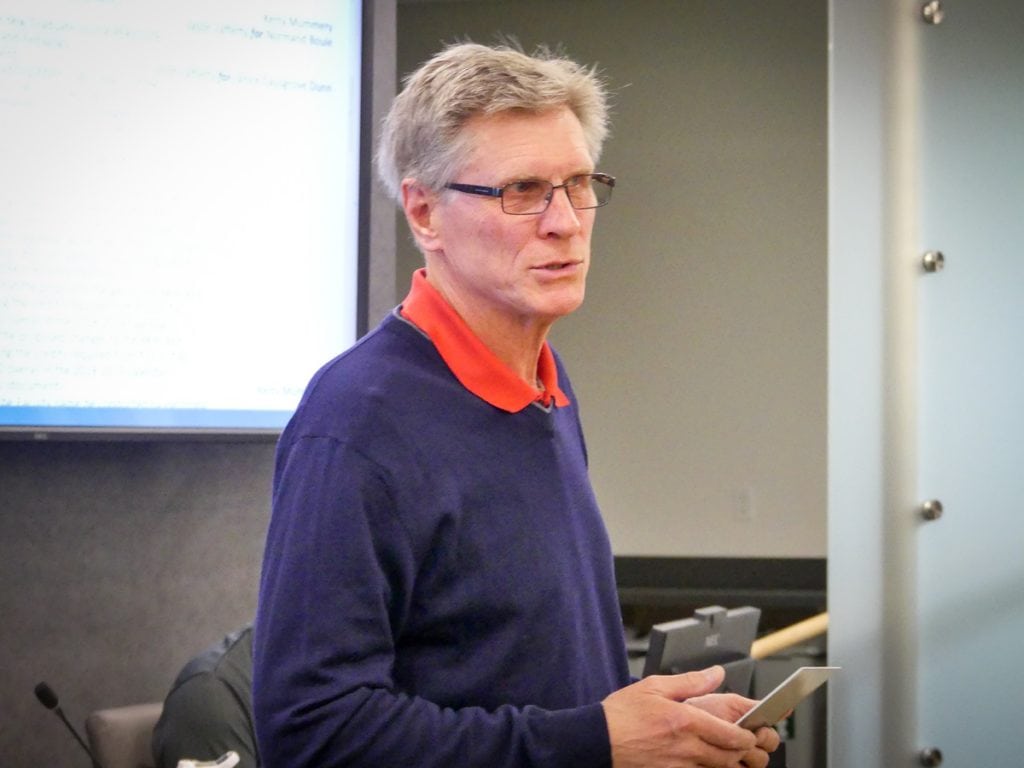Applied Physiology, Nutrition, and Metabolism recently published a special issue on the best practices in physical employment standards (PES). Those interested in an overview of the pertinent applications of PES can read “Towards best practices in physical and physiological employment standards”, which provides an extensive introduction to the field and highlights topics covered in the special issue. The entire issue, including the introduction, is available as open access.
We spoke with Dr. Stewart Petersen, Professor, Physical Education and Recreation at the University of Alberta and guest editor of the special issue to learn more about the importance of PES and connecting the research done in this field to practitioners, employees and employers.

Image: University of Alberta
Q: How and why are physical employment standards important and why do they deserve a special issue featured in APNM?
A: Physical employment standards have existed for decades. They are widely used in many physically demanding occupations (e.g., mining, forestry) and in almost all emergency response occupations (e.g., law enforcement, military, firefighting). The main point of such standards is to help with placement and retention of employees who are able to safely and effectively meet the demands of their job.
Many emergency response jobs are mainly sedentary but when the call comes in, workers must respond immediately. This rein sponse often involves hard work under extremely stressful conditions. For the last couple of months, we have all watched the emergency responders in Fort McMurray. Consider both the physical and emotional strain involved in fighting that fire, evacuating the city, maintaining security, and tending to vulnerable members of the community, all while watching the city burn around them. Then consider that many of them continued working under these challenging conditions for days.
While this is obviously an extreme, and thankfully rare, situation, other recent events of flooding, train wrecks, industrial and natural disasters highlight the necessity for emergency responders to be ready at all times in the interest of public safety.
Q: In your paper you suggest that an essential step in the development of this field will be a new name. Why is this an important step and do you have any suggestions?
A: The field of physical employment standards is an emerging area of scientific specialization. As mentioned, organizations have been using such standards for many decades but the field is really just coming into its own. As an area of science develops, we start to give more attention to the features that make it unique from other areas of study. One of the features of research in employment standards is the fact that specialists from many areas of science (e.g., ergonomics, psychometrics, occupational health and safety, exercise physiology) can make meaningful contributions. In our paper we suggest that those who are part of this field may want to engage in thoughtful discussion on such matters.
I have some opinions, but it would be better for the young scientists who are going to drive this field for the next 25 years to engage in the debate and make these decisions. I’m near the end of my career and don’t want to be seen as one of the old, grumpy Muppets on the balcony…
Q: You also mentioned that a critical step in defining this field of study is to formalize the use and understanding of terms. Describe why this is important and how the formalization of terms can be done.
A: One of the features of a well-defined area of scientific study is uniformity in terminology. In the preparation of the review papers in the special issue, authors were encouraged to take a systematic approach to language and nomenclature.
Q: Throughout the issue it is clear that a certain level of uncertainty is to be expected when determining standards. How can a practitioner who is administering these tests develop a level of comfort with this ongoing uncertainty?
A: Excellent question! Unfortunately, in the past many employment standards have been accepted as absolutes, and there are few things in life that are actually ‘black and white’. In science, we are trained to deal with probability as a means of deciding whether something is significant or not. That is true in other domains as well where we frequently hear the phrase, “on the balance of probabilities…”. There are several points where uncertainty can affect the precision of a cut-score. This refers to the score that distinguishes one level of performance from another. The most common cut-score is that level of performance that separates those who pass from those who fail. Regardless of the method used to set the cut-score, some uncertainty exists. The more important questions are how to identify the uncertainty, how to minimize it, and how to account for it. There are no simple answers but good science and sound professional practice can minimize this problem. Perhaps a good analogy is how law enforcement uses radar to detect speeding. We all know that the tool is not completely precise yet knowing the limitations allows the tool to be used effectively for it’s purpose.
Q: As organizations face numerous budgetary pressures it is natural that managers might want to reuse tests done for similar jobs or by similar organizations to avoid extra costs. Why isn’t this “recycling” of screening tests, standards and cut-scores recommended?
A: There are some situations where the physical demands of work in organization are exactly the same as another. However there are many more where the job may be different enough that employment tests and standards from one organization cannot be applied fairly to others. We have not said that recycling cannot happen but rather that this should be undertaken with caution. Differences in staffing, equipment, operational practices and policies can all affect the physical demands of a job. So the take-home message is not to assume that all workers in the same occupation actually encounter the same physical demands.
Q: The papers on age and sex are fairly definitive in suggesting that PES must be age and sex neutral. Do you think people will be surprised by this divergence from historical approaches?
A: Fair physical employment standards should be based first and foremost on the ability to do the job safely and effectively. I will also point out that many standards fit this criterion and as such are age and sex neutral. If the job involves a task such as advancing a charged fire hose in a timely manner to stop a fire from extending, then we could build a fair standard and a cut-score around the need to complete this task safely and effectively. Then it actually doesn’t matter who is doing the job (or trying to do the job). The firefighter (male or female, older or younger) must be able to demonstrate competency on the task. There are many steps that have to be undertaken carefully in order to achieve this goal, but it certainly can be done.
Q: What are the key messages you’d like practitioners and those who design and perform screening tests to take away from this research?
A: Perhaps the key message is to do the best job possible from the very beginning of any research to develop a physical employment standard. That involves the best in terms of scientific and professional practice. Another message is that organizations must recognize that in the absence of the very best science it is unlikely that tests and standards will stand up to a legal or human rights challenge. Unfortunately, an organization never knows that until the challenge occurs. An analogy might be that you can drive on the freeway without a seatbelt and get away with it. However, when the time comes that you actually need the seatbelt to save your life, it is probably too late to think about buckling up.
Q: What are the best ways for researchers, workers, employers and other stakeholder to work together to ensure the best possible standards?
A: You answered your own question! We need to work together towards commitment to best practice. I am reminded of Jack Donahue’s (former Canadian men’s basketball coach) example of commitment. In the context of his favorite breakfast…”the chicken made a contribution but the pig made a commitment”. Very simply, doing this right requires commitment from all parties.
Q: What are the next steps for PES research? What research are you hoping to see next on this topic?
A: I hope that many researchers and practitioners will benefit from the information contained in this special issue. It represents, on a global basis, the best information available at this time. However, science does not stand still. We all need to actively pursue better practice and remain open to learning from each other. I am very much looking forward to the next international conference on physical employment standards that will be held in England in July 2018. The world will look different than it does today and we should all be excited about that.




